A small and lightweight hybrid camera boasting 5-axis in-body image stabilization, 399 on-sensor phase detection autofocus points, and 4K-video capture, the Sony A7R II has wide appeal for photographers who want to travel light and capture amazing image quality. The camera/sensor is only half the equation, however, and to maximize image quality, the Sony A7R II’s high-resolution 42.4Mp sensor demands — and frankly deserves — top-quality glass to realize its potential.
With reduced flange distance on the mirrorless body design and requiring a large image circle to cover the full-frame sensor, a completely new range of Sony FE mount lenses had to be developed for the Sony A7 series. For this reason, up until now lens options have been a little sparse, but both Sony and Carl Zeiss have been busy designing new optics to really squeeze out the image-quality potential of the A7R II.
We’ve now tested a total of 17 FE mount lenses on the A7R II, including primes and zooms, covering focal lengths from wide-angle 21mm through to super-telephoto 300mm. These include some of the best-performing and sharpest lenses we’ve ever tested, with overall DxOMark scores ranging from a superb high of 49 points to the lowest, but still respectable, 26 points. Our in-depth analysis of the best lenses for the Sony A7R II rounds up results for many of these lenses, to give you all the info you need to make the right buying decisions. To make it simple, we’ve categorized these lenses into five groups: standard zoom, telephoto zoom, and primes for portraiture, landscape, and general use.
Best prime lenses on the Sony A7R II
Pros and discerning photographers have long understood the advantages in quality and performance that a prime lens with a fixed focal length brings over a zoom lens. Often boasting very fast apertures and excellent image quality right into the corners of the frame, primes are often smaller and therefore better-suited for use on small mirrorless cameras. We’ve evaluated 11 prime lenses on the A7R II, including two lenses that are in the top five for all lens/camera combinations we’ve ever tested. Here we bring you the three top-performing primes for portrait, landscape, and general-use photography.
Best standard prime lens: Sony FE Carl Zeiss Sonnar T* 55mm f/1.8 ZA
Standard 50/55mm prime lenses provide a useful focal length for a variety of subjects, “fast” apertures for low-light photography and creative bokeh effects, and all in a reasonably small and affordable unit. The top three such lenses on the Sony A7R II all offer fast f/1.8 or f/2 apertures, with excellent light transmission and some outstanding test results. With an overall DxOMark score of 48 points, the $998 Carl Zeiss Sonnar T* FE 55mm f/1.8 is the pick of the bunch, ahead of the $949 Carl Zeiss Loxia 2/50 FE at 45 points, and Sony’s own $248 FE 50mm f/1.8 at 37.
With a phenomenal sharpness score of 40 P-Mpix, the Sonnar T* FE 55mm f/1.8 is the fifth-sharpest lens/camera combo we’ve ever tested, offering razor-sharp and uniform acutance over 80% between f/1.8 and f/11. The slightly cheaper Loxia 2/50 is still very sharp, scoring 35 P-Mpix, and is pin-sharp and uniform using apertures between f/5.6 and f/11. At the wider aperture settings f/2 to f/4, it’s still very good, with strong 80% acutance across most of the frame, but is slightly softer in the outer field compared to the Sonnar T*. The advantage of the Lozia 2/50 is its size, however, as it offers a slightly shorter barrel length compared to Sonnar T*, which should be appealing to photographers after a camera setup with smaller footprint.
At $248, the Sony FE 50mm f/1.8 is the budget option, and although still good, it can’t quite compete with the Zeiss alternatives. Its 26 P-Mpix for sharpness is respectable, but not in the same class as the Zeiss options, and at wide apertures between f/1.8 to f/4, it offers good sharpness in the center of the frame, but more edge softness. The Sony FE 50mm f/1.8 is at its sharpest and most uniform between f/5.6 to f/11.
All 3 lenses display fairly heavy corner shading at the maximum aperture, approaching –2Ev, and will require some correction. Closing down one stop to f/2.8 virtually eliminates the problem on the Loxia and Sony lenses, with the Sonnar T* displaying a little more vignetting at this setting (around –0.67Ev). The Sony FE 50mm f/1.8 boasts virtually no distortion at 0.1%, and while the Zeiss options barrel a little more at 0.4%, that’s not going to have a significant impact and can be easily corrected in post-production. Chromatic aberration scores are marginally better for the Sony 50mm f/1.8, too, but any noticeable fringing on the Zeiss lenses is limited to the far outer field.
Best portrait prime lens: Sony FE 85mm f/1.4 GM
Portrait lenses offer a short telephoto focal length that compresses perspective and keeps facial features in proportion, while also featuring fast maximum apertures to help throw the background out of focus and isolate the main subject. There are three portrait prime lenses in the 85/90mm range available for the Sony A7R II, including two of the best-performing lenses we’ve ever tested. Topping the group is the Sony FE 85mm f/1.4 GM, which, tested on the A7R II, is the third highest-ranked lens/camera combo in our database, with an overall DxOMark score of 49 points.
Scoring 36 P-Mpix for sharpness, the Sony FE 85mm f/1.4 is very good at its widest aperture settings, with around 70% acutance at f/1.4 and 80% at f/1.8 with only very minor drop-off in the corners. Close down a couple of stops and the FE 85mm f/1.4 GM is razor-sharp between f/2.8 to f/11.
In second place for portrait prime lenses, the Sony FE 90mm f/2.8 Macro G OSS scores 47 points overall. It fact, it’s the second-sharpest lens we’ve ever tested, achieving a phenomenal sharpness score of 42 P-Mpix that realizes all the resolution potential of the Sony A7R II’s 42.4Mp sensor. With its 1:1 macro magnification potential, the $1,098 Sony FE 90mm offers close focus photography opportunities and doubles as a very capable portrait lens. For portraits, the Sony FE 90mm f/2.8 is outstandingly sharp and uniform between f/2.8 – f/11, but resolution does drop a little at f/22, which is important to consider for close-focus macro shots with good depth of field. Boasting a 85mm focal length and a two-stop faster f/1.4 maximum aperture, however, it’s fair to say that the Sony FE 85mm f/1.4 is the better dedicated portrait option between these two, as it’s capable of amazing background bokeh for headshots and has better light transmission for low-light photography to boot.
With a hefty $1,798 price tag, however, the FE 85mm f/1.4 GM will be a significant investment for many photographers. Slightly cheaper at $1199, the Carl Zeiss Batis 85mm f/1.8 is a little more affordable, and still puts in a very good performance — scoring 45 points overall, along with a very similar sharpness score to the 85mm f/1.4 at 35P-Mpix. The Batis 85mm f/1.8 is a little softer in the corners at f/1.8 and f/2.8 compared to the Sony 85mm, but it’s still very strong in the center and uniformly sharp between f/4 to f/11. The Batis 85mm f/1.8 also displays some fairly heavy vignetting at the maximum f/1.8 aperture — worse even than the Sony FE 85mm at f/1.4 — and it isn’t completely free of corner shading at any aperture, compared to the Sony FE 85mm, which is clean from f/4 onwards.
Best landscape lens: Carl Zeiss Batis 25mm f2 Sony FE
We’ve tested three excellent wide-angle prime lenses for landscape or architectural photography on the A7R II, which all achieved very good overall DxOMark scores of 40 points and above, with similar levels of sharpness.
The pick of the bunch is the $1,299 Carl Zeiss Batis FE 25mm f/2, with 46 points overall, excellent sharpness and transmission, and the least chromatic aberration. Not far behind at 42 points, the $1,499 Carl Zeiss Loxia 2.8/21 is the most expensive, but offers marginally better overall sharpness with a score of 37 P-Mpix compared to 36 P-Mpix for the Batis 25mm. To be fair, there’s very little in it at most settings and both lenses offer excellent resolution from the maximum aperture through to f/11.
Despite costing just a third of the price of the Loxia 2.8/21, the $448 Sony FE 28mm f/2 puts in a very commendable performance with a comparable sharpness score of 35 P-Mpix. Of course, it’s the longest focal length of the three, with the Zeiss options featuring wider and more useful focal lengths for wide-angle work. The Sony FE 28mm boasts the best overall sharpness at f/22, however, which is important for those long depth-of-field landscape shots. At its widest aperture settings the Sony FE 28mm displays some edge softness at f/2 and at f/2.8, but it’s very sharp between f/4 to f/11. In comparison, the Batis 25mm f/2 and Loxia 2.8/21 are tack-sharp and uniform from their maximum aperture through to f/11, so if you’re after the best resolution at the fast apertures, or you need a really wide focal length, the Zeiss wide-angle primes are the ones to go for.


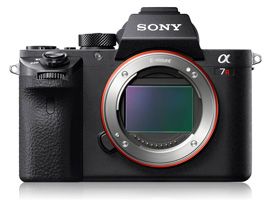
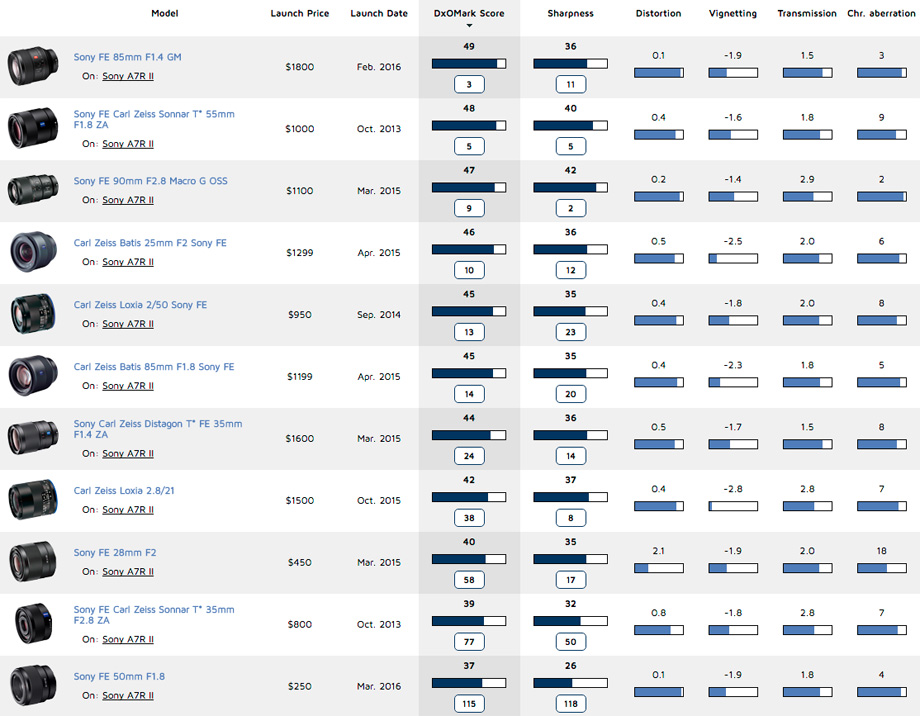
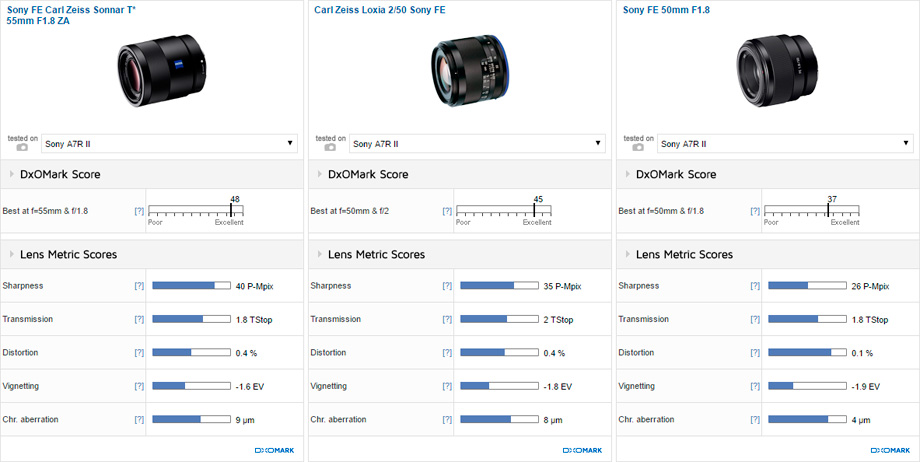
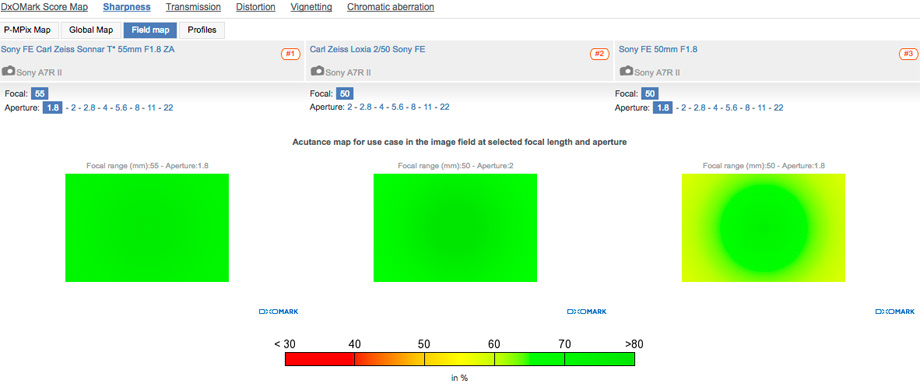
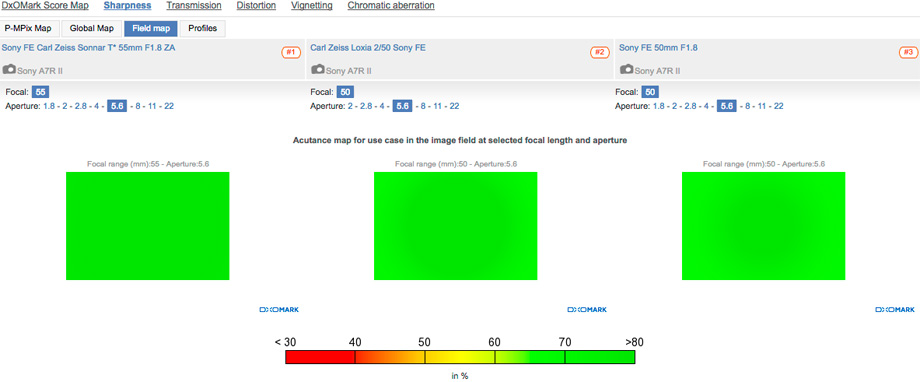
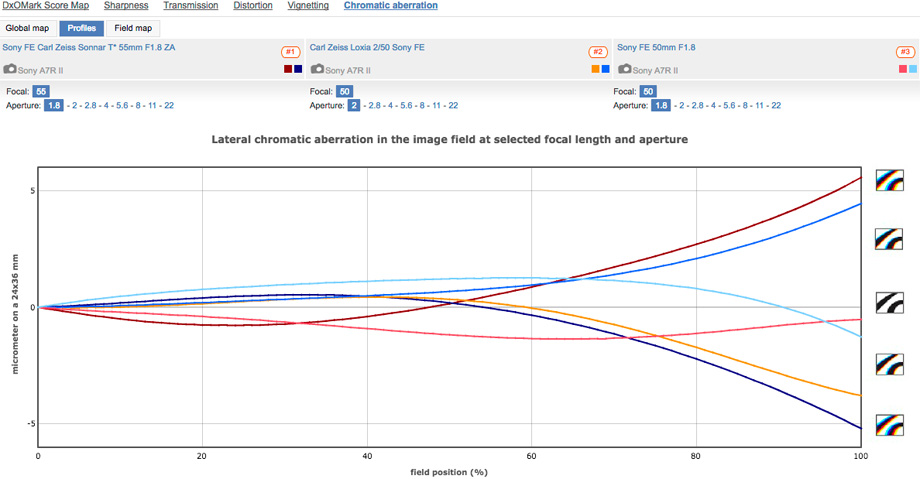
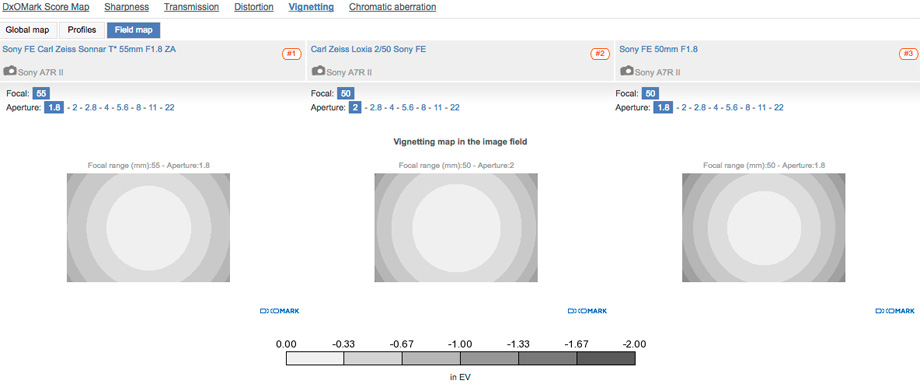
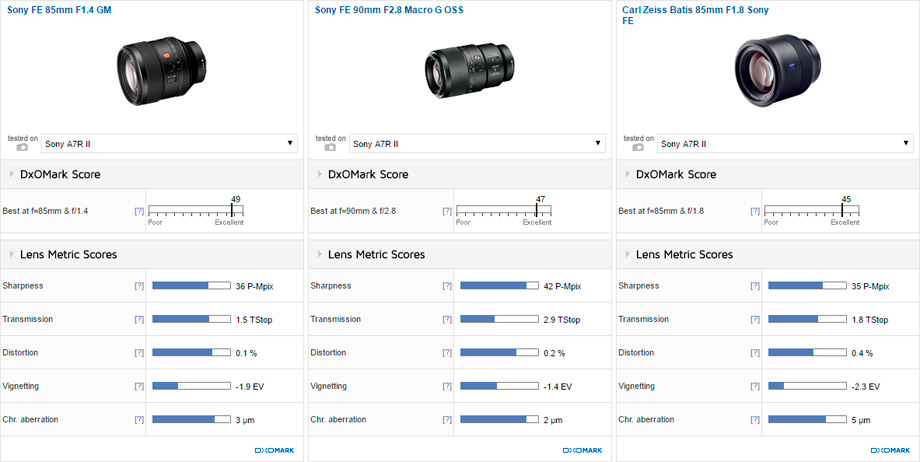
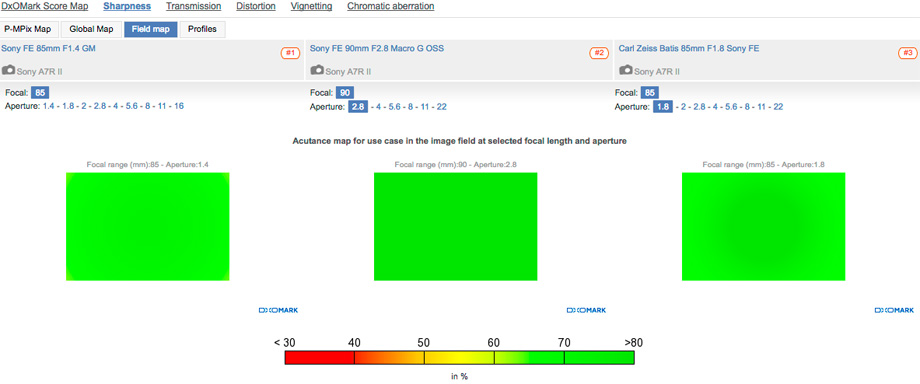
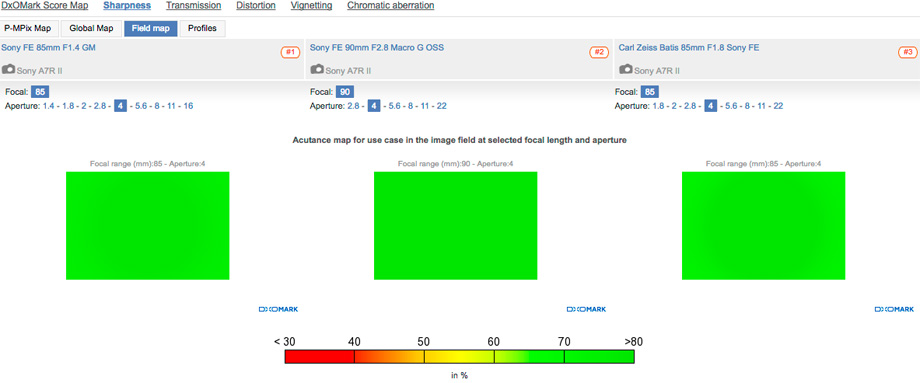
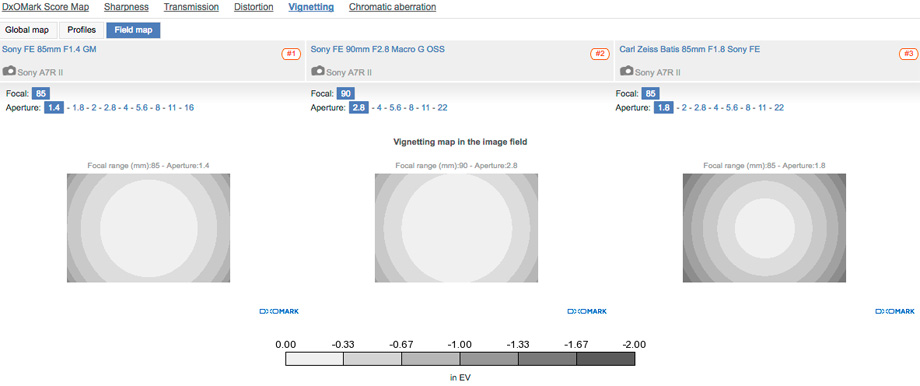
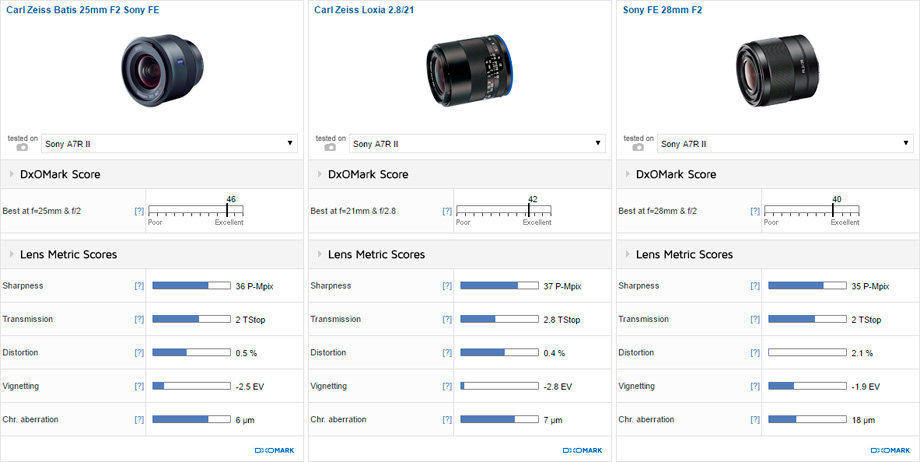
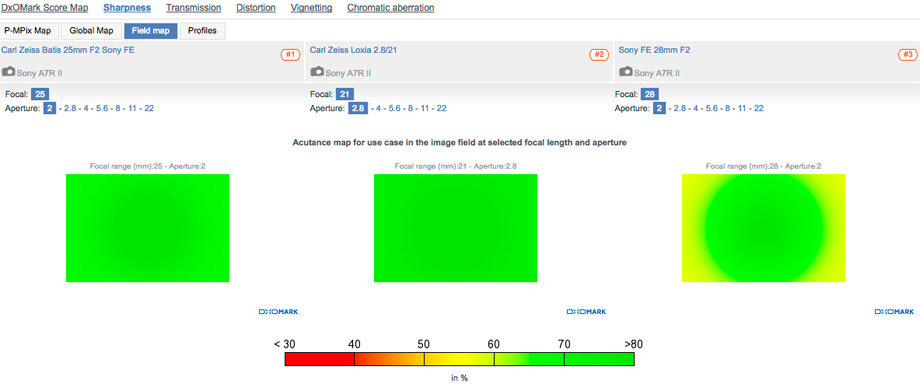
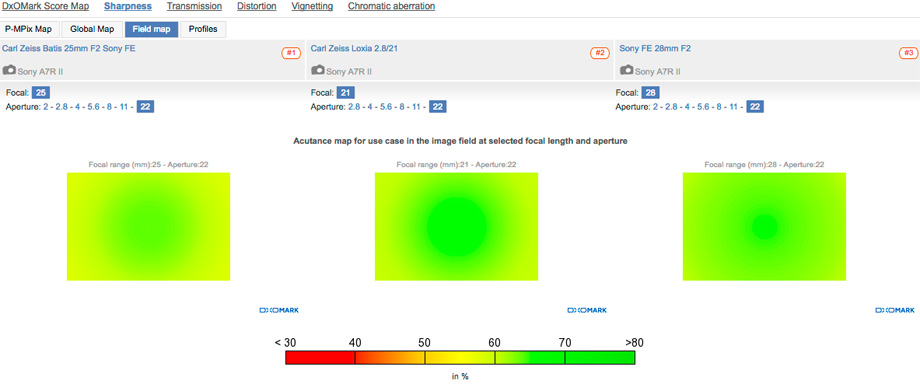
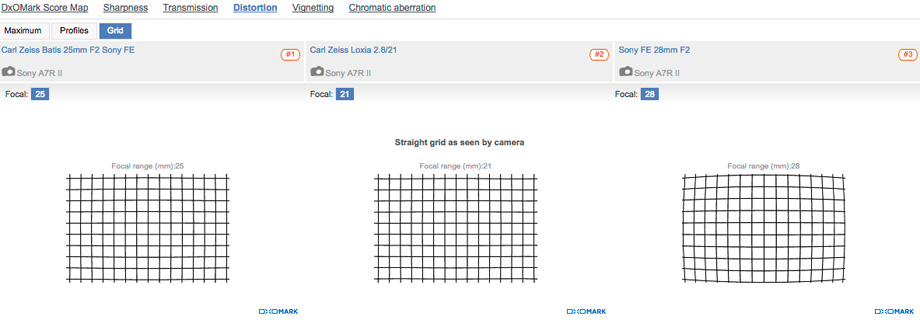
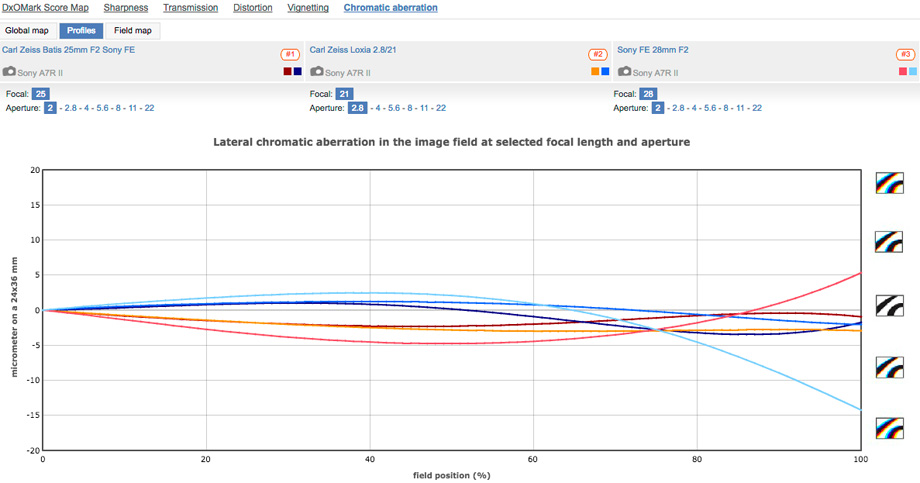
DXOMARK encourages its readers to share comments on the articles. To read or post comments, Disqus cookies are required. Change your Cookies Preferences and read more about our Comment Policy.